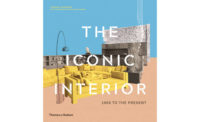Money Talks
At the top of the list of topics architects like to talk about as little as possible is money. Dirty, complicated money.

Which means that Yale University Professor Peggy Deamer’s new book is a necessary—though highly theoretical and historical—addition to the global architectural conversation. And while the book doesn’t delve into the particularities of the professional economy, it opens up essential avenues of inquiry, as well as expressing some inspiring examples of historical and architectural scholarship at its finest. The best (and best-written) essay is Robin Schuldenfrei’s exploration of the Bauhaus’s Haus am Horn, in which she weaves discussions of materiality and construction (complete with fantastic illustrations) into a thoughtful analysis of the economic realities behind the experimental 1923 house—and, ultimately, its financial difficulties and failure as a possible (and possibly replicable) Modernist icon.
Another highlight is Ellen Dunham-Jones’s thoughtful take on Rem Koolhaas’s theoretically and practically serious playfulness. Dunham-Jones notes Koolhaas’s attempts to locate an architecture that exists on both a built and conceptual plane, while attacking assumptions about capitalism—as seen in his Harvard Design School Guide to Shopping, a melding of higher education and consumerism.
In her essay on Le Corbusier, Deborah Gans looks at the Swiss architect’s enormous city plans—a topic certainly covered in other publications—but makes the connection to the cultural logic of capitalism more clearly than anyone else has done.
Deamer has given her book a broad chronological range. She starts it off with a preface and an introduction written by herself, short essays that perform a two-fold function. First, they help situate the reader who may not be an expert in all the fields covered in the book. (These range from Nathan Rich’s discussion of large-scale Indian semisuburban planning to Pier Vittorio Aureli’s deep history of Archizoom, Superstudio, and Manfredo Tafuri.) Second, and most important, Deamer’s introductory pieces lend a sense of continuity and an overarching frame to the often disparate essays.
Deamer assures us that these writings do all make sense together, even though they may not hinge easily on to a single conceptual framework—but neither does the extremely complex and often subjective subject of capitalism.
In an afterword entitled “Architecture Without Capitalism,” architect and critic Michael Sorkin exhorts us (ironically) to simply “enter the communism of disembodiment” by downloading “our entire capacity onto silicon or its successor.” He argues that this would obviate the need for built structures and therefore the machinations of money and property. But, as Sorkin says, “mental architecture is just a metaphor.” As money, so clearly, is not.






Post a comment to this article
Report Abusive Comment